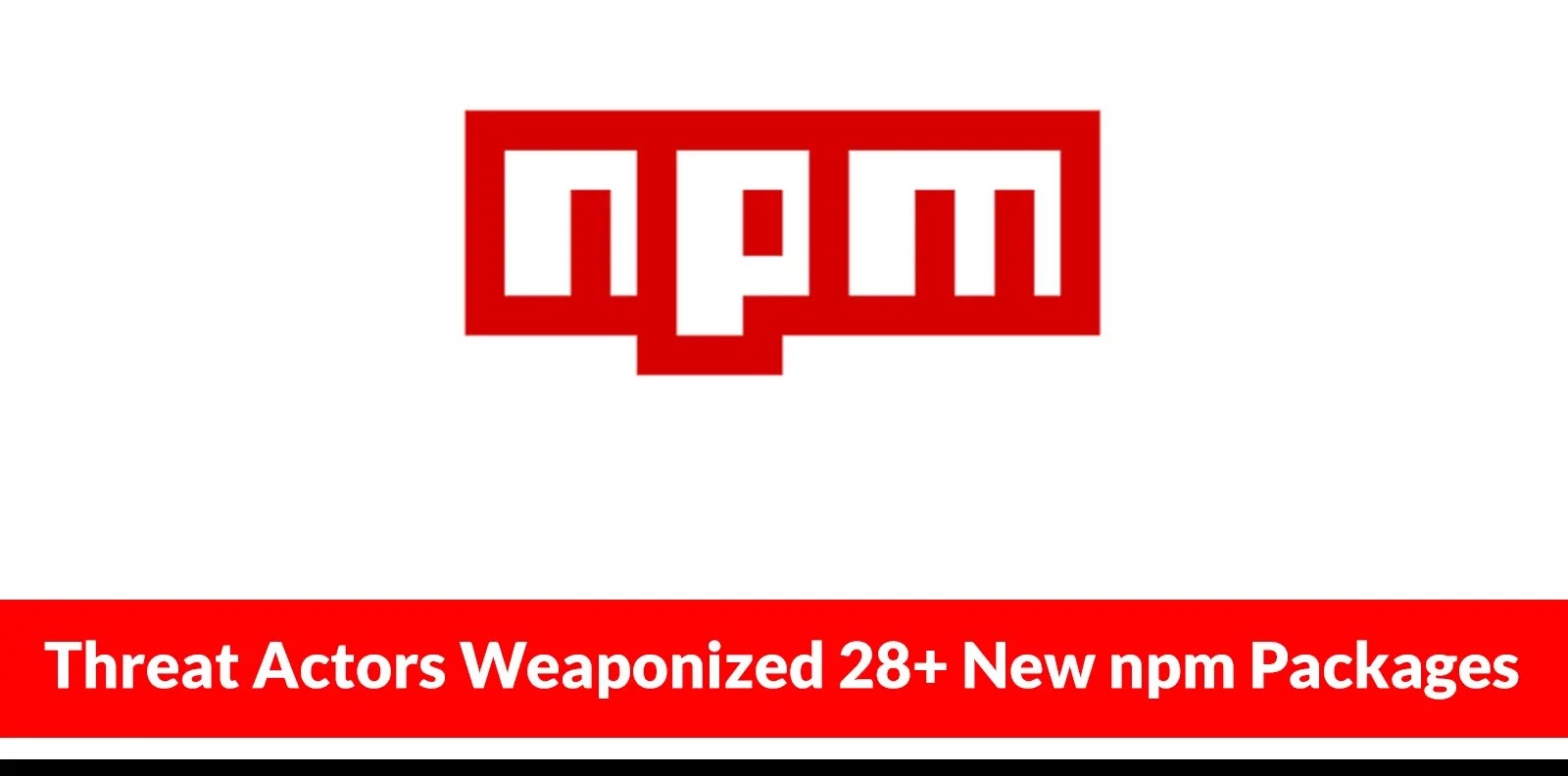
Threat Actors Weaponized 28+ New npm Packages to Infect Users With Protestware Scripts
The Silent Sabotage: Threat Actors Weaponize npm Packages with Protestware
The digital supply chain, a cornerstone of modern software development, has once again become the battleground for sophisticated cyberattacks. Recent reports highlight a concerning escalation: threat actors are weaponizing popular JavaScript package manager (npm) repositories to distribute politically motivated malware. This isn’t just about data theft; it’s about disruption, influence, and leveraging the ubiquitous nature of npm to infect unsuspecting users with “protestware” scripts. This insidious campaign, targeting Russian-language users, underscores the urgent need for developers and organizations to fortify their software supply chain defenses.
Anatomy of the Attack: Over 28 New npm Packages Compromised
The campaign described by CybersecurityNews.com reveals a highly organized and expansive operation. Threat actors have reportedly engineered and deployed over 28 new npm packages, collectively containing nearly 2,000 versions of malicious code. This sheer volume indicates a dedicated effort to maximize reach and evade detection through constant iteration and new package releases. The primary objective is to inject protestware scripts into target systems, designed to disrupt user interactions and spread political messages, rather than traditional data exfiltration or system damage.
The malicious code, once executed, aims to interfere with the user’s computing experience, potentially altering system behavior or displaying propagandistic messages. The chosen vector – npm packages – is particularly potent. Developers frequently integrate numerous third-party packages into their projects to leverage existing functionalities, often without stringent security checks on every dependency. This trust, regrettably, is being exploited.
The Supply Chain Vulnerability: Trust Exploited
Supply chain attacks represent one of the most critical threats in cybersecurity today. Rather than directly breaching a target organization, attackers compromise a component within their supply chain – in this case, widely used public software repositories like npm. When a developer incorporates a compromised package into their application, the malicious code becomes an integral part of the final product, silently delivered to end-users.
The specific nature of this protestware campaign highlights a growing trend where cyber warfare extends beyond state-sponsored espionage or financially motivated crimes. Ideological or political motivations are increasingly driving sophisticated attacks, making threat intelligence and proactive defense mechanisms more crucial than ever. While no specific CVEs have been officially assigned to these newly weaponized packages, the broader class of software supply chain vulnerabilities is well-documented. For instance, vulnerabilities like those exploited in the SolarWinds attack (though fundamentally different in execution, share the common theme of supply chain compromise) often receive high CVSS scores due to their pervasive impact.
Remediation Actions: Fortifying Your npm Dependencies
Protecting against protestware and other forms of malicious package injection requires a multi-layered approach. Developers and organizations must shift from reactive security to proactive measures throughout their software development lifecycle.
- Implement Strict Dependency Auditing: Regularly audit all third-party dependencies used in your projects. Understand where each package comes from, its maintainers, and its known vulnerabilities.
- Utilize Software Composition Analysis (SCA) Tools: Integrate SCA tools into your CI/CD pipeline. These tools automatically scan your codebase for open-source components, identifying known vulnerabilities, licensing issues, and potential malicious code.
- Pin Dependency Versions: Avoid using broad version ranges (e.g.,
^1.0.0or*) in yourpackage.json. Explicitly pin dependency versions (e.g.,1.2.3) to prevent unexpected and potentially malicious updates. - Conduct Regular Security Scans: Employ static application security testing (SAST) and dynamic application security testing (DAST) to identify vulnerabilities within your own code and its interactions with third-party components.
- Verify Package Integrity: Where possible, verify package integrity using checksums or digital signatures. While npm’s ecosystem is vast, some critical packages offer mechanisms for verifying their authenticity.
- Isolate Build Environments: Build your applications in isolated, sandboxed environments to prevent potential malicious code from affecting your build infrastructure.
- Stay Informed: Subscribe to security advisories and threat intelligence feeds specifically focusing on the npm ecosystem and broader software supply chain attacks.
Tools for Detection and Mitigation
Effectively combating supply chain attacks requires leveraging the right tools. Here are some categories and examples of tools that can assist in detection and mitigation:
| Tool Name | Purpose | Link |
|---|---|---|
| Snyk | SCA, vulnerability scanning, dependency management | https://snyk.io/ |
| Dependabot (GitHub) | Automated dependency updates and vulnerability alerts | https://github.com/features/security/ |
| OWASP Dependency-Check | SCA, identifies known vulnerabilities in dependencies | https://owasp.org/www-project-dependency-check/ |
| npm audit | Built-in npm command for vulnerability scanning | https://docs.npmjs.com/cli/commands/npm-audit |
| Trivy | Vulnerability scanner for containers and supply chains | https://aquasecurity.github.io/trivy/ |
Conclusion: A Persistent Threat Requiring Vigilance
The weaponization of npm packages for protestware highlights the evolving landscape of cyber threats. It’s a stark reminder that software dependencies, while convenient, can introduce significant risk if not managed with rigorous security protocols. Organizations and individual developers must recognize the supply chain as a critical attack surface and implement robust security practices. Continuous monitoring, diligent auditing, and the proactive adoption of security tools are no longer optional; they are essential for maintaining the integrity and security of the applications we build and use daily.





